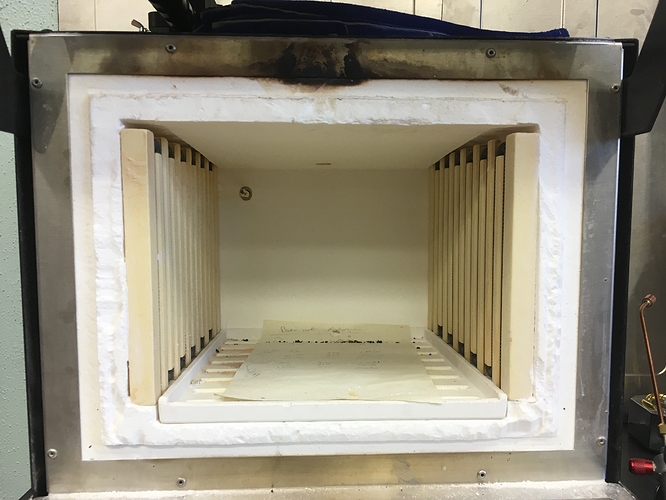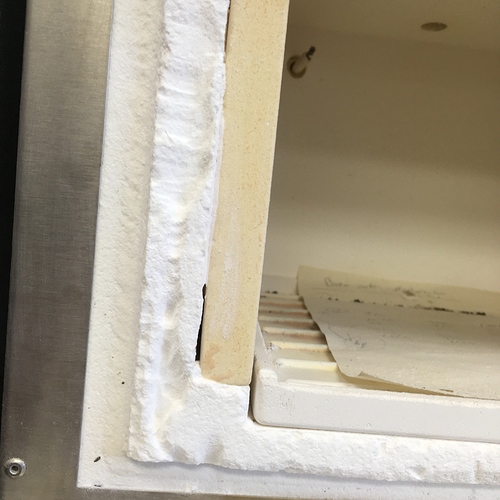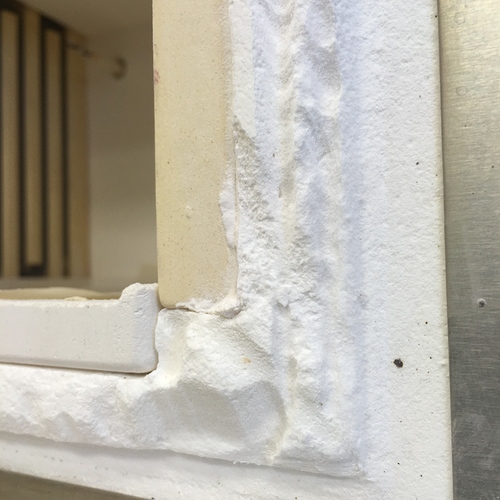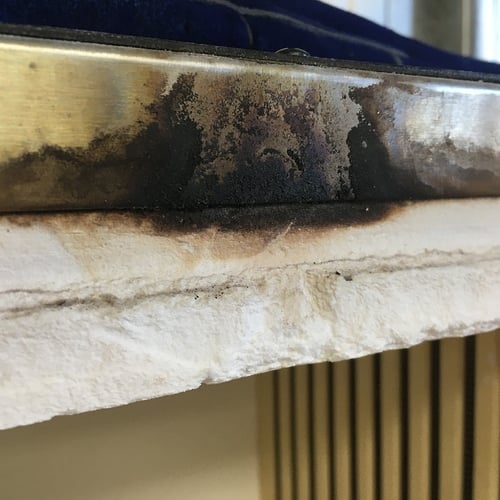Hi Friends,
I have an old Vulcan 3-550 that I’d like to get going for use in annealing and enameling. I might eventually use it for burnout as well. Right now it heats up when turned on, but what concerns me is the state of the insulation on the muffle and the door.
The front of the muffle insulation is gouged out in several places, while the door insulation has slowly been sheared flat by rubbing against the cabinet when the door lifts. The combined effect results in spaces where the door and muffle aren’t sealed when closed. Replacing the muffle insulation is quite costly, so my thought was to simply replace the door insulation, which would likely improve the kiln’s seal considerably.
I’m wondering if: a) it’s worth the trouble and expense to do the door repair alone, or b) it’s pointless to repair the door if you aren’t also replacing the muffle, or c) perhaps it’s unnecessary to replace any of it and it can be used as-is!
Thanks for any advice,
Nicole
Run it and see what kind of temperature you can hold without doing anything first then worry about it. Does it have a controller that will allow you to do this? If not, go auber.com and see what they can do for a controller.
Hi Nicole,
I think I would be with Rob on this…it might not be worth fooling with if all you are going to do is annealing (pretty low temp) and enameling, since you are going to be opening and closing the door a lot anyway. I can see where the flange of the front of the insulation has worn away, but without seeing the back of the door and how it seals against the front of the kiln, it’s impossible to see how much of a problem there is with the seal. I imagine you can see it fairly well by moving your head all around, but I don’t know if you can get a good picture of it. Another option I can suggest is that you take the kiln, which you can transport, to a local pottery supply or workshop. If you ask around, you will probably find someone who has worked on these kilns or maybe evens someone who does kiln repair locally. I have done some ceramics and I do know that there are ceramic fiber insulation blankets and wet mixes that you can buy as well as kiln cements which can repair these things…I just can’t tell you much about how to apply them on vertical surfaces. Also, most fair sized cities will have a distributor for refractory products and those folks sell the cements and blankets and should be able to tell you how to use them and how to find someone who does repair. I don’t think repairing the door seal would have to be an incredibly expensive proposition.
I’m confused when you call this a muffle, because I can see exposed elements and I’ve always thought a muffle covered the exposed elements. Chips in the ceramic around the electric elements are not a big problem in general as long as the elements stay in place. Not sure if I’m completely understanding you.
Hope this is of some help. -royjohn
Sorry, it is https://www.auberins.com/. I bought a 1500 W controller from them last year for an old kiln that I was rebuilding for annealing and heat treating. As long as you stay under 1500 W it will cost less than $200 last time I checked.
Ok, my unit has a controller and I ran a test today. The kiln took 1hr 20min to heat up to its max of 2012° F. Is that a long ramp-up time? It seems to be able to hold at that temperature indefinitely. So, yeah! Don’t know why I didn’t just do that earlier!
When in operation, a bright orange light can be seen where the door and muffle are not meeting nicely. Since I’ll be working with lead-based enamels and am concerned about fumes, my thought is to go ahead and replace the door insulation to see if the ramp-up time is reduced, hopefully mitigate fume exposure and perhaps minimize temp recovery time (after opening).
About an exhaust: the exhaust tube at the top is 1" OD. I plan to get some stainless steel flexible exhaust tubing and attach that to my inline fan system. Sound right?
RE: The term “muffle”: I’m only using that term because the part that envelops the heating coils while also creating the ceiling and floor is listed in the parts catalog as the “muffle insulation”. I’m really new to this.
RE: The back of the kiln door: it IS hard to get a pictures, but I can say that it is sheared completely flat, all the way across.



